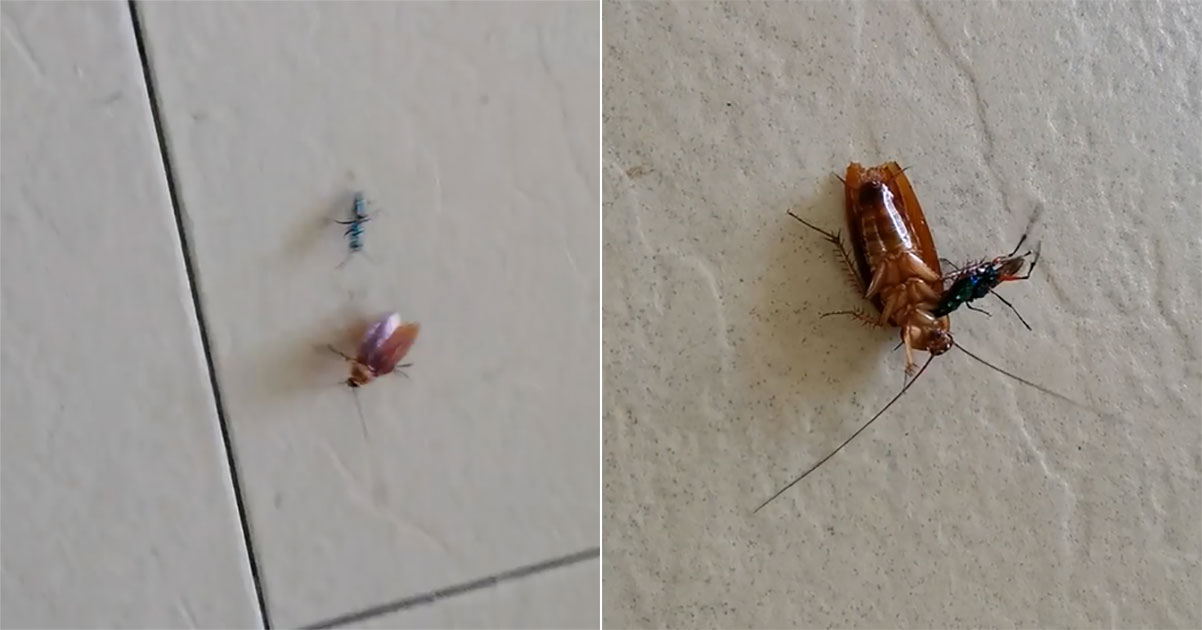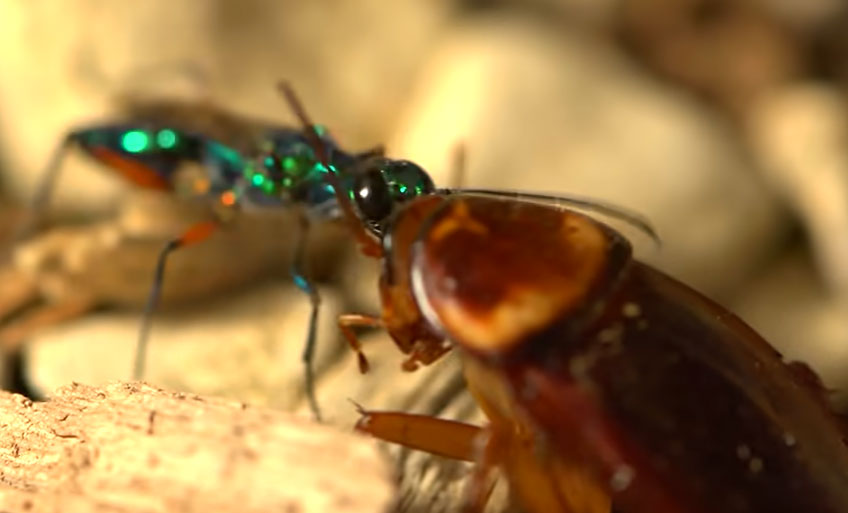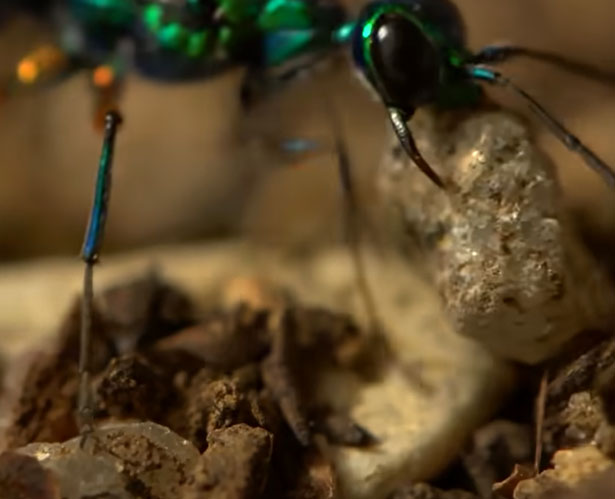Do you hate cockroaches? Do you like to see them taken down? Struggle? Destroyed?
Or just immobilised so that they get turned into a walking zombie and have their insides eaten?
If so, here's a fascinating video just for you.
Wasp tackles cockroach
A wasp was caught on video in Singapore hunting down a cockroach that was far larger than it.
The wasp not only chased and tackled the cockroach, which looked to flee desperately as it even flapped its wings, the tinier insect also appeared to tranquilise the cockroach as it turned on its back and could not put up a violent struggle, despite being much bigger.
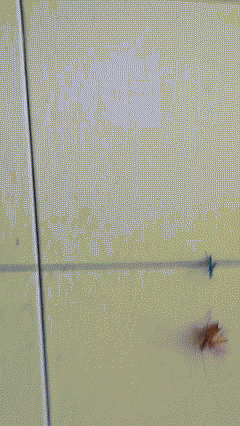
This is the tackle in slow motion:
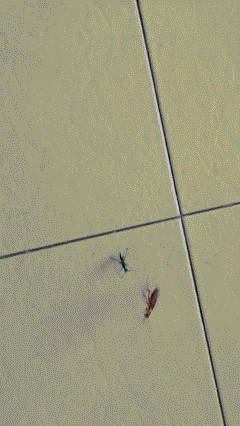
Wasp caught attacking spider in Singapore
Previously, a wasp was caught on camera attacking a larger spider and cutting off its legs at Coney Island in Singapore.
The wasp then carried the legless spider and flew away, presumably back to its nest.
What happens next?
The wasp hunting cockroach video lasted only 12 seconds, but it showed the precision of the wasp in its attack.
The wasp does not get many opportunities to attack a cockroach, as cockroaches can be about six times bigger than wasps.
What the video did not show is the next part where the wasp would have led the cockroach back to the nest to lay an egg in it.
Wasps of this variety, with a metallic, blue-green body, are known to use cockroaches' bodies to reproduce.
The entire process has been documented before elsewhere beyond Singapore:
How wasp uses cockroach body
A female jewel wasp will mate only once in a lifetime.
Once she has mated, she carries dozens of fertilised eggs and will locate cockroaches using sight and sound when it comes time to reproduce.
As seen in the video, the wasp stings the cockroach in its thorax to inject a substance that immediately and temporarily paralyses the cockroach.
The wasp will also sting the cockroach in the ganglia, which is known as the brain of the cockroach.
The mind-control venom the wasp injects is a neurotoxic substance that blocks the chemical octopamine in the cockroach ganglia.
Octopamine controls the cockroach’s motivation to walk.
The venom interferes with the cockroach’s escape reflexes.
The cockroach is unable to run away and save itself.
Laying egg on cockroach as it is kept alive
Here's the fascinating part about nature.
The zombie state typically wears off in a week, but the wasp will get to work straight away by gnawing off the cockroach's antennae.
The wasp then leads the walking cockroach back to the nest like it lost its free will.
Once the cockroach is brought to the nest, the wasp lays a single egg on the cockroach.
The wasp then collects pebbles and builds a wall around the cockroach in order to protect the egg.
After that, the wasp flies off to enslave another cockroach.
Egg hatch and larva feeds on cockroach alive
After two days, the wasp egg hatches.
The larva feeds on the cockroach body and organs for sustenance.
It will consume the hemolymph, the nutrient-rich cockroach equivalent of blood.
All the while the cockroach is still alive.
Once all other organs are eaten, the larva finishes up with the cockroach’s nervous system, which should kill the cockroach by this time.
The larva then applies an anti-microbial secretion to the inside walls of the cockroach corpse.
Cockroach serves as safe shell
In the next one month, the larva transforms into a pupa in the safe confines of the cockroach shell.
A fully formed adult wasp will break through the cockroach corpse and emerge from within.
The cycle then repeats itself.
Top photos via
If you like what you read, follow us on Facebook, Instagram, Twitter and Telegram to get the latest updates.
